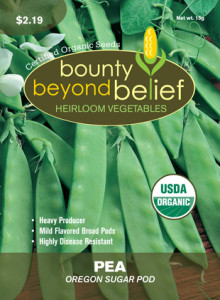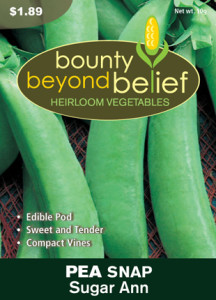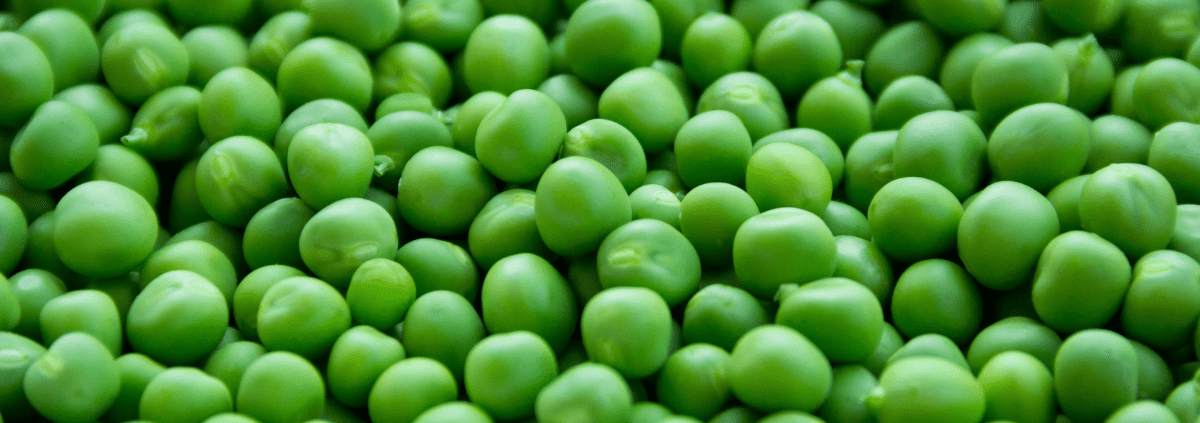Please Pass The Peas
History of Green Peas and Recipes
By Engrid Winslow
“How luscious lies the pea within the pod” – Emily Dickson wrote. I think most of us would agree that fresh peas are a hallmark of early summer produce and have us saying “please pass the peas”. The origin of peas is shrouded in mystery as it is a food plant so ancient that the earliest preserved specimens date from 9750 BCE in Thailand. Peas are legumes and of the family Fabaceae and is the third largest of the flowering plant families.
The ancient Greeks and Romans grew peas and hot pea soup was peddled in the streets of Athens while fried peas were sold to spectators instead of popcorn at the Coliseum in Rome. They were popular in England in the middle ages and there were to primary varieties – one was a field pea to be fed to animals and the other was called the “greene pea” and appeared often at the dinner table. The pea arrived in the Americas with Christopher Columbus and was part of the early colonist’s kitchen gardens.
Green Peas are easy to grow and can be succession planted to extend the harvest, they are delicious additions to salads, soups and eaten alone. The varieties are many, including shelling peas and sweet sugar snaps as well as the snow pea used in Asian cooking. “All the essentials of life,” according to Winston Churchill, are only four: hot baths, cold champagne, old brandy and new peas.
Here are a couple of classic recipes to help you enjoy the bounty of fresh peas and to make your family say “please pass the peas!”
CORNUCOPIA SALAD
Serves 4 as a Vegetarian Main Course
1 bunch torn arugula
1 bunch torn butterhead lettuce
½ lb sugar snap peas, string removed
1 cup cooked black beans
1 cup diced buffalo mozzarella
16-20 halved cherry tomatoes
Kernels from 2 ears of cooked corn
½ cup diced red bell pepper
For Vinaigrette:
2 TBL red wine vinegar 1 TBL Dijon mustard
2 TBL balsamic vinegar ½ tsp salt
2 TBL lime juice ½ tsp freshly ground black pepper
1 TBL lime zest 2 TBL chopped roasted red bell pepper
¼ cup minced red onion 6 TBL olive oil
2 TBL chopped fresh basil 6 TBL canola oil
1 TBL minced fresh parsley 2 TBL water
ENGLISH PEAS WITH PROSCIUTTO AND POTATOES
Serves 3 or 4
½ lb new potatoes, scrubbed and cut into ½ inch dice
3 oz. chopped prosciutto, pancetta or bacon
2 lbs shelled fresh English peas
½ small onion, finely chopped
1 small handful of fresh mint leaves
Extra virgin olive oil
Salt and freshly ground pepper, to taste
Put potatoes in a medium pot with water to cover by one inch and one tablespoon of salt. Bring to a boil and simmer gently for 10-12 minutes until potatoes are tender. Drain.
Heat a small glug of olive oil in a large skillet over medium heat and add onion and prosciutto and a pinch of salt. Sauté until onion is soft and fragrant and prosciutto has rendered some fat and is turning crisp around the edges, about 5 minutes.
Add the peas and potatoes and season generously with salt and pepper. Add 2 tablespoons of water to help steam cook the peas for another 4-5 minutes until they are tender and the flavors have come together.
Toss in the fresh mint and drizzle with a bit more olive oil and additional salt and pepper to taste. Then pass the peas!








